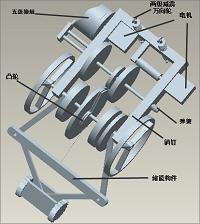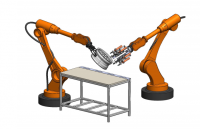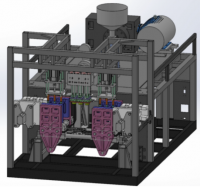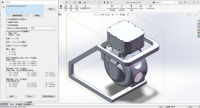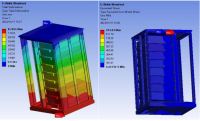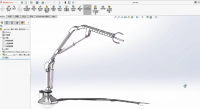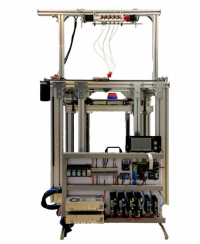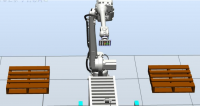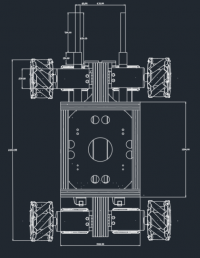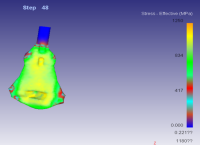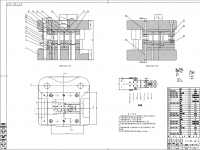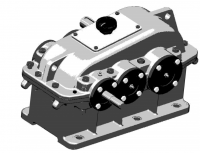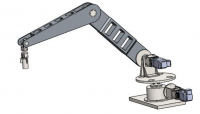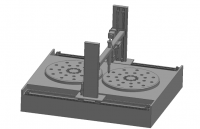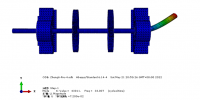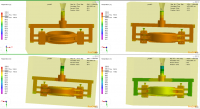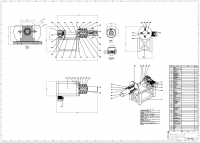基于连杆机构的跳跃机构设计
摘要
仿生跳跃机器人除了具有一般跳跃机器人可以跨越障碍,躲避危险等优点外,还具有运动灵活、地面适应能力强的特点,因此受到国内外各个研究机构的高度关注。由于此类机器人涉及到仿生学、机械学、控制等多种学科,因此研制难度很大。特别是多足仿生跳跃机器人,其跳跃机理、样机设计等关键技术的研究在国际上也尚处于研究的初期阶段。本课题对四足仿生跳跃机器人的起跳机理进行了研究设计了跳跃原理。首先系统地分析了国内外腿型仿生跳跃机器人的研究现状,从机器人的跳跃理论模型上进行了分类,并介绍了国内外研究跳跃机器人起跳动力学分析的一般方法。通过对仿生机构起跳运动机理的分析,对其起跳模型进行简化,建立了基于连杆机构的跳跃机构理论模型,基于连杆机构的跳跃机构行了运动学和动力学分析,同时给出了其离地起跳的前提条件以及单次跳跃高度和距离的表达式。设计了驱动原,结合实例进行了运动学仿真并对结果进行讨论。从而证明了仿生跳跃机构模型的可行性和运动分析方法的有效性。实现了机器人双腿各关节轨迹的优化,并通过计算实例验证了基于连杆机构的跳跃机构优化方法的可行性。
关键词:连杆 跳跃机构 仿真
目录
一、文献综述 4
1跳跃理论优势 5
1.1尺度效应 5
1.2弗劳德系数 6
2国内外研究现状 7
2.1国外研究现状 7
2.2国内研究现状 8
3弹跳机器人的弹跳机构及几种动力学模型分类 9
3.1钟摆型机构及钟摆动力学模型 9
3.2弹射型 10
3.3混合型 14
4跳跃机器人的动力及稳定性控制 15
5应用前景 15
二、仿蝗虫跳跃机器人结构设计及其运动学与动力学分析 17
1背景 17
2调研报告 17
2.1跳跃理论优势 17
2.2现有跳跃运力学模型及分析 19
3研究内容 23
3.1蝗虫跳跃机理 23
2.3基于蝗虫杠杆的弹射跳跃运动机理的结构设计 25
2.4电机的选型 26
2.5对跳跃机器人进行动力学分析 26
3研究方案 27
4进度表 27
5目前进展 28
三.可控微型跳跃机器人 29
1 简介 29
2 设计方法 32
2.1 跳跃机构 33
2.2复位机构 34
2.3 操纵机构 35
3 实施 37
3.1 跳跃机构 38
3.2 复位机构 39
3.3 操纵机构 40
3.4 集成 40
3.5 跳跃参数的调整 43
4 结果 44
4.1 笼子的成本 44
4.2 起跳参数的调整 45
4.3 障碍情况下的行进 46
5 总结 46
6 结论 47
参考文献: 47
文献原文
参考文献:
[1]Alexander, R. M. (1988). Elastic mechanisms in animal movement.Cambridge: Cambridge University Press.
[2]Alexander, R. M. (2003). Principles of animal locomotion. Princeton:Princeton University Press.
[3]Armour, R., Paskins, K., Bowyer, A., Vincent, J. F. V., & Megill,W. (2007). Jumping robots: a biomimetic solution to locomotion across rough terrain. Bioinspiration and Biomimetics Journal, 2,65–82.
[4]Bennet-Clark, H. C. (1975). The energetics of the jump of the locust Schistocerca gregaria. Journal of Experimental Biology, 63(1),53–83.
[5]Brackenbury, J., & Hunt, H. (1993). Jumping in springtails: mechanism and dynamics. Journal of Zoology, 229, 217–236.
[6]Burdick, J., & Fiorini, P. (2003). Minimalist jumping robot for celestial exploration. The International Journal of Robotics Research,22(7), 653–674.
[7]Burrows, M. (2003). Biomechanics: Froghopper insects leap to new heights. Nature, 424(6948),509.
[8]Card, G., & Dickinson, M. (2008). Performance trade-offs in the flight initiation of drosophila. Journal of Experimental Biology, 211(3),341.
[9]Faisal, A. (2001). Coordinated righting behaviour in locusts. Journal of Experimental Biology, 204(4), 637–648.
[10]Frantsevich, L. (2004). Righting kinematics in beetles (insecta:Coleoptera). Arthropod Structure and Development, 33(3), 221–235.
[11]Gronenberg, W. (1996). Fast actions in small animals: springs and click mechanisms. Journal of Comparative Physiology A: Sensory, Neural, and Behavioral Physiology, 178(6), 727–734.
[12]Hollander, M., & Wolfe, D. A. (1999). Nonparametric statistical methods. New York: Wiley.Kaspari, M., & Weiser, M. D. (1999). The sizegrain hypothesis and interspecific scaling in ants. Functional Ecology, 13(4), 530–538.
[13]Kovac, M., Guignard, A., Nicoud, J. D., Zufferey, J. C., & Floreano,D. (2007). A 1.5 g sma-actuated microglider looking for the light.In IEEE international conference on robotics and automation,pp. 367–372.
[14]Kovac, M., Fuchs, M., Guignard, A., Zufferey, J., & Floreano, D.(2008). A miniature 7 g jumping robot. In IEEE international conference on robotics and automation, pp. 373–378.
[15]Kovac, M., Schlegel, M., Zufferey, J. C., & Floreano, D. (2009a).A miniature jumping robot with self-recovery capabilities. In IEEE/RSJ international conference on robotics and automation,pp. 583–588.
[16]Kovac, M., Zufferey, J., & Floreano, D. (2009b). Towards a selfdeploying and gliding robot. In Floreano, D., Zufferey, J. C., Srinivasan, M. V., & Ellington, C. (Eds.), Flying insects and robots Berlin: Springer, Chap. 19.Lambrecht, B. G. A., Horchler, A. D., & Quinn, R. D. (2005). A small,insect-inspired robot that runs and jumps. In IEEE/RSJ international conference on robotics and automation, pp. 1240–1245.
[17]Roberts, T. J., & Marsh, R. L. (2003). Probing the limits to musclepowered accelerations: lessons from jumping bullfrogs. Journal of Experimental Biology, 206(15), 2567–2580.
http://www.bysj1.com/ http://www.bysj1.com/html/5215.html http://www.bysj1.com



